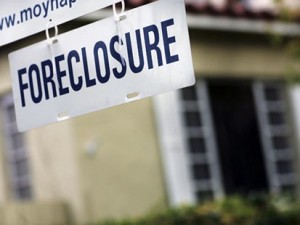What Rights Do Renters Have When Their Landlord Goes Into Foreclosure?
 Imagine you’re a renter. You’ve been paying your rent faithfully every month. Then you come home from work one day to find an eviction notice on your door. Your landlord has defaulted on the property, a bank is the new landlord, and they’re forcing you to get out. What do you do?
Imagine you’re a renter. You’ve been paying your rent faithfully every month. Then you come home from work one day to find an eviction notice on your door. Your landlord has defaulted on the property, a bank is the new landlord, and they’re forcing you to get out. What do you do?
For the past two years, the headlines have been dominated about housing foreclosures. One of the aspects of the foreclosure crisis that has received very little attention, however, is the role that rental properties have played in the housing slump. Many landlords have seen their properties go into foreclosure, and as a result, many tenants have found themselves in very dire straights. In Minneapolis alone, 65% of foreclosures have been on rental properties. Nationwide, it is estimated that 40% of people to lose their homes to foreclosure are renters. And according to a report by the Center for Responsible Lending, the number of rental properties going into foreclosure is expected to rise.
Fortunately, renters have very specific rights when it comes to the foreclosure process, thanks to a bill passed in April.
Protecting Tenants at Foreclosure Act of 2009
According to the Protesting Tenants at Foreclosure Act of 2009, banks or owners who obtain a property through the foreclosure process do not have the right to evict a tenant if a lease is still in effect. The exception is if the new owner wants to live in the property. In this case, tenants have to be served 90 days notice – which is much longer than the typical eviction process. In summary:
- Leases would survive a foreclosure — meaning the tenant could stay at least until the end of the lease. The lease survives and ends as it would had there been no foreclosure.
- Month-to-month tenants would be entitled to 90 days’ notice before having to move out
- Any state legislation that is more generous to tenants will not be preempted by the federal law
- These protections apply to Section 8 tenants, too
Relocation Assistance
If Fannie Mae or Freddie Mac owns the mortgage on a foreclosed property, renters should consider themselves lucky. Both agencies have vowed to assist renters with the relocation process by providing money to help renters pay security deposits and first months’ rent on a new place to live. The only way that a tenant would know the details of their landlords’ mortgage is to wait for Fannie Mae or Freddie Mac to contact them. That can be a bit unsettling, because you may not have an exact time frame for that knock on the door. One real estate appraiser I talked to said that their office is so backlogged with foreclosed properties that it can often take 9-12 months before Fannie Mae takes action on a foreclosed property. However, the standard is that Fannie Mae will contact the tenant within 30 days of the property going into foreclosure.
To find out if you are eligible for rental or relocation assistance from Fannie Me, click here. Although Fannie Mae will allow you to sign a new month-to-month lease in order to keep people on the property, you should be aware that the property will be on the market, and that you would have to be willing to allow real estate agents to show the home.
If you’re living in a rental property that has undergone foreclosure, here’s wishing you the best as you and your family relocate.
Additional Resources:
NOLO
Legal Assistance Resource Center


Thanks, this is really really helpful. What happens to your security deposit in this situation? If the landlord can’t pay the mortgage, I’d assume he/she probably can’t pay the deposit either. Does a tenant have any recourse or rights?
Berry – that’s a really good question. From what I read, a tenant is not required to pay a new security deposit if the old lease is still in effect. If Fannie Mae gives you the option of signing a new month-to-month lease, they will not require a security deposit.
As far as legal recourse is concerned, check out the links that I provided for NOLO and the Legal Assistance Resource Center. They had some pretty good suggestions about what tenants can do.
Great post! I work for a non-profit that does foreclosure prevention, and too many people don’t know the facts on foreclosure and their own rights.
An additional resource in this situation would be the federal Department of Housing and Urban Development (HUD). Their website contains a lot of information and links to agencies across the country.
hello….quick question…in the event that an investor purchased my home (im renting) am I obligated to pay rent during the 90 notice period?
if a property does go into foreclosure and you’re allowed either the ninety days or until the lease expires can the bank change the amount charged for the rental?
Thanks, this is really really helpful. What happens to your security deposit in this situation? How do I get it back? From who?
I would also recommend renters check online to determine their landlord’s foreclosure status from month to month. If the foreclosure is detected early, they can approach the landlord to discuss the matter proactively, rather than waiting for the last minute when things might be very chaotic. Renters can check their landlord’s foreclosure status FREE online in the USA at http://www.nyhousingcenter.com. FREE foreclosure info is available in the RENT section of the site.